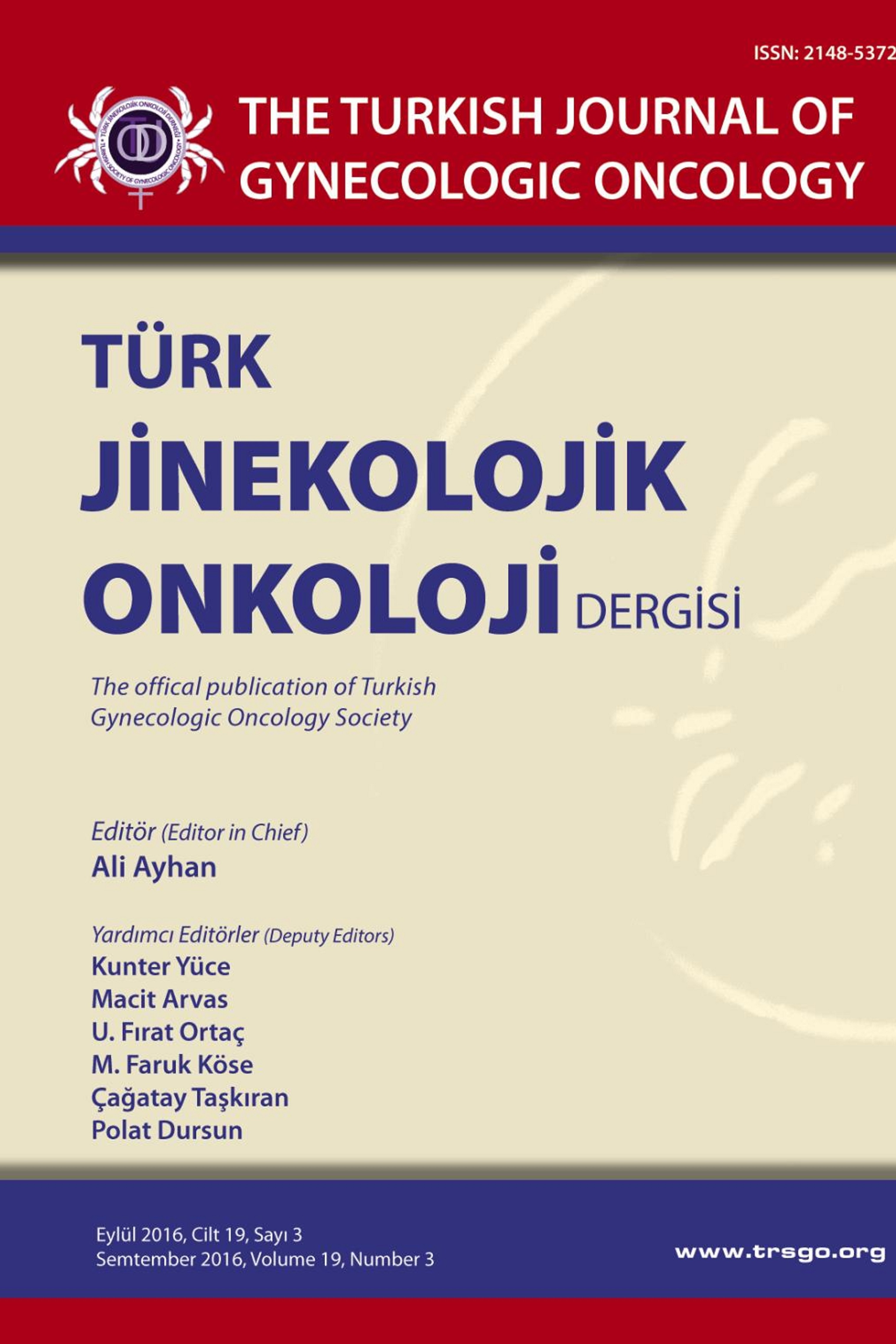KADIN SAĞLIK ÇALIŞANLARININ SERVİKAL KANSERE İLİŞKİN BİLGİ VE TUTUMLARININ BELİRLENMESİ
Amaç: Araflt›rma, kad›n sa¤l›k çal›flanlar›n›n (Hemflire, Hekim, Ebe) servikal kansere iliflkin bilgi ve tutumlar›n›n belirlenmesi amac›yla tan›mlay›c› olarak yap›lm›flt›r. Materyal ve Metod: Tan›mlay›c› olarak planlanan araflt›rmada veri toplama arac› olarak, Form I Kiflisel Bilgi Formu, Form II Serviks Kanseri Risk Faktörleri, Pap smear ve HPV Bilgi Formu ve Form III Servikal Kanserin Erken Tan›s›na ‹liflkin Tutum Ölçe¤i’nden oluflan üç adet form kullan›lm›flt›r. Veriler bilgisayar ortam›nda frekans da¤›l›m›, khi-kare testi, Kruskal Wallis varyans analizi, korelasyon analizi ve iki ortalama aras›ndaki fark›n önemlilik testi kullan›larak de¤erlendirilmifltir. Sonuçlar: Araflt›rmaya kat›lan kad›n sa¤l›k çal›flanlar›n›n (KSÇ) %71,7’sinin hemflire, %17,4’ünün hekim, %10,9’unun ebe oldu¤u ve %68,4’ünün evli oldu¤u görülmektedir. KSÇ’n›n %50,2’sinin hiç jinekolojik muayene yapt›rmad›¤› ve %70,4’ünün hiç Pap smear test yapt›rmad›¤› belirlenmifltir. KSÇ’n›n yafl, medeni durum, e¤itim durumu ve mesleklerine göre jinekolojik muayene yapt›rma ve Pap smear test yapt›rma durumlar› aras›ndaki fark istatistiksel olarak önemli bulunmufltur (p<0,05). KSÇ’n›n, e¤itim durumlar›na, mesleklerine ve çal›flt›klar› bölüme göre serviks kanseri risk faktörleri, Pap smear ve HPV bilgi formundan ald›klar› toplam puanlar› aras›ndaki fark istatistiksel olarak önemli bulunmufltur (p<0,05). KSÇ’n›n serviks kanserinin erken tan›s›na yönelik tutumlar›n›n belirlenmesi amac›yla uygulanan ölçek sonucunda, KSÇ’n›n yafl, e¤itim durumu, jinekolojik muayene yapt›rma, Pap smear test yapt›rma, serviks kanserine yönelik bilgi alma ve bilgi verme durumlar› ile servikal kanserin erken tan›s›na iliflkin tutum ölçe¤inden ald›klar› toplam puan durumlar› aras›ndaki fark istatistiksel olarak önemli bulunmufltur (p<0,05). Tart›flma: KSÇ’n›n serviks kanserine iliflkin bilgi ve tutumlar› istendik düzeyde de¤ildir
Aim: The study was performed descriptively to determine the knowledge and attitudes of female health workers (nurses, doctors, midwives) regarding cervical cancer. Material and Method: In this descriptive study, three forms including Individual Information Form, Cervical Cancer Risk Factors, Pap smear and HPV Information Form, Attitude Scale Towards Early Diagnosis of Cervical Cancer were used as data collection tools. The data were evaluated in computer environment by using the frequency distribution, Chi-Square test, Kruskal Wallis Analysis of Variance, the correlation analysis, and the significance test for the difference between two mean values. Results: %71.7, %17.4, %10.9 of the female health workers in the study were nurses, doctors, midwives, respectively and %68.4 of them was married. It was determined that %50.2 of female health workers had never had a gynecologic examination, and %70.4 of female health workers had never been screened with the Pap smear test. The difference between having a gynecologic examination and being screened with the Pap smear test (Form I) in female health workers according to age, marital status, education status, and occupation was found signficant statistically (p<0.05). The difference between total points that female health workers got from Cervical Cancer Risk Factors, Pap smear and HPV Information Form (Form II) according to education status, occupation, and the department they work was found signficant statistically (p<0.05). As a result of the scale which is performed so as to determine attitudes of female health workers towards early diagnosis of cervical cancer (Form III), the difference between total points that female health workers got from attitude scale towards early diagnosis of cervical cancer and female health workers’ age, education status, having a gynecologic examination and being screened with the Pap smear test, getting and providing information about cervical cancer was found signficant statistically (p<0.05). Discussion: Cervical cancer knowledge and attitudes regarding female health workers is not a desirable level.
